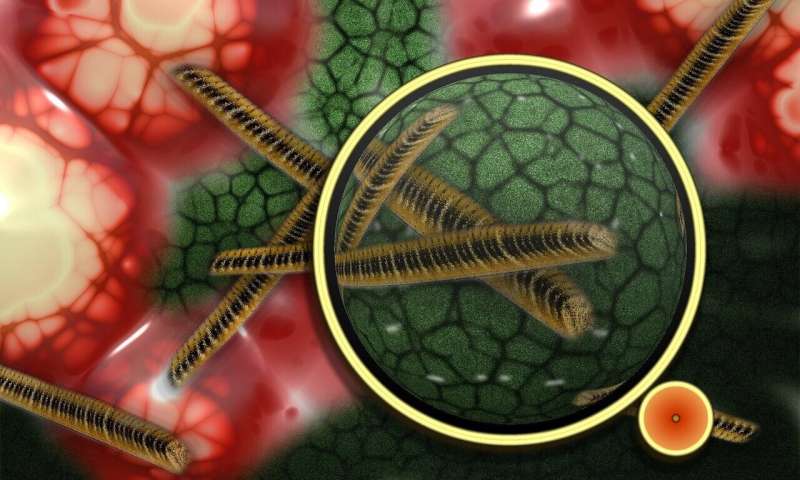Protozoans and pathogens make for an infectious mix

Single celled organisms in the environment are protecting pathogenic bacteria and priming them for human infection, an international team of researchers has discovered.
Microorganisms such as protozoa and bacteria have been conducting an 'arms race' for billions of years. Now scientists investigating how the environment impacts bacterial interactions with human hosts have discovered that for pathogenic bacteria, such as Vibrio cholerae, these interactions may have made them not only stronger but significantly more infectious.
The results provide a new understanding about the mechanisms of infection and disease transmission.
The new observation that strains of V. cholerae can be expelled into the environment after being ingested by protozoa, and that these bacteria are then primed for colonization and infection in humans, could help explain why cholera is so persistent in aquatic environments. The disease-causing bacteria are protected in the protozoan gut and ejected into the environment in membrane-bound expelled food vacuoles (EFVs).
The report, published in Nature Microbiology, is the result of an international study co-led by researchers from the ithree institute at the University of Technology Sydney (UTS), Australia, Singapore Centre for Environmental Life Sciences Engineering (SCELSE) at Nanyang Technological University, Singapore (NTU), University of New South Wales, Sydney and Tufts University, U.S..
Lead researcher, Associate Professor Diane McDougald, from UTS and SCELSE, said the experimental evidence suggests protozoa may therefore be a source of highly infectious pathogens in recreational waters, such as swimming pools and beaches, aquaculture and drinking water systems and cooling towers.
"Most opportunistic pathogens don't transfer from person to person. Rather, infection is transferred via the environment," Associate Professor McDougald says.
In the case of cholera, which is endemic in many countries, infection spreads via water. Outbreaks occur when sanitation systems are inadequate or when damaged during natural disasters or war.
"Our results indicate that pathogenic Vibrios in EFVs are resistant to starvation and antibiotics, as well as the acidic conditions encountered in the human stomach," Associate Professor McDougald says.
"Our hypothesis is that these bacteria have adaptive traits that have allowed them to either escape or survive being eaten by protozoan predators. These traits have evolved in the environment as a response to predation and not for the ability to cause disease in accidental hosts. Unfortunately, in humans, these adaptive traits can increase the ability of the bacteria to colonize the host and cause disease," she says.
The researchers used a mouse model to demonstrate that not only were the pathogenic cells in EFVs fitter they were also highly infectious, colonizing mouse model intestines 10 times more efficiently than free-living cells.
Dr. Espinoza-Vergara, the lead author of the work said "This shows that EFVs are, potentially, a real threat to human health. More broadly, the results may apply to other opportunistic pathogens that are released by protozoa in EFVs, thus establishing a new way to investigate the transmission and impact of infectious diseases."
There are currently no detection systems for EFVs that would allow for the monitoring of potential pathogenic outbreaks. The researchers say that future research could identify biomarkers, for example proteins on the surfaces of EFVs, so antibodies could be developed to enable real time monitoring.
Professor McDougald says that being able to identify targets to prevent the production of EFVs is another solution.
"To do that we need to understand how and why the cells in EFVs are so much better at growth and colonization than free living cells. It is important research because diseases like cholera often impact the world's poorest people," she says.
More information: Gustavo Espinoza-Vergara et al. Vibrio cholerae residing in food vacuoles expelled by protozoa are more infectious in vivo, Nature Microbiology (2019). DOI: 10.1038/s41564-019-0563-x
Journal information: Nature Microbiology
Provided by University of Technology, Sydney



















